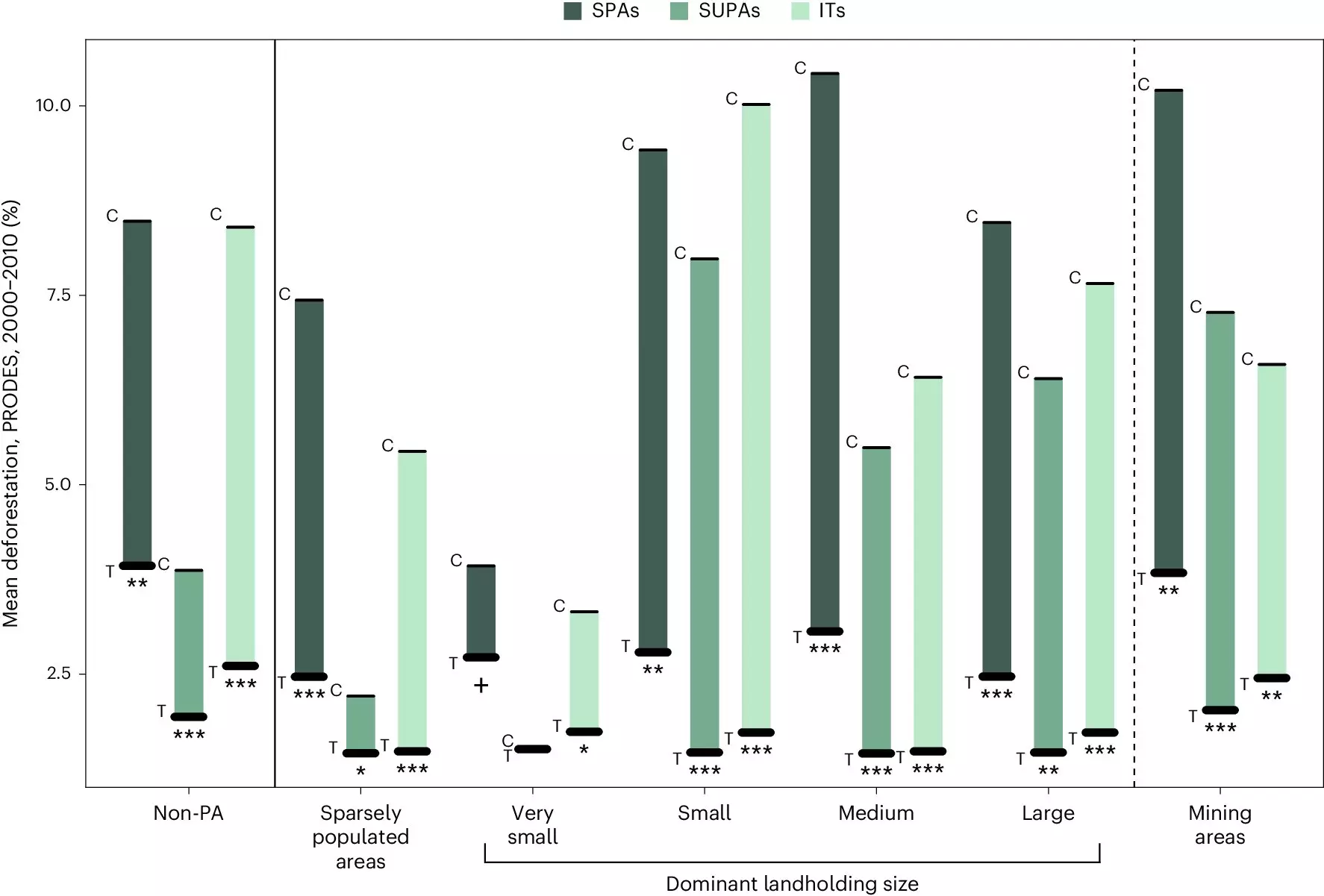A recent analysis has revealed that land protection initiatives in the Brazilian Legal Amazon (BLA) played a critical role in reducing deforestation rates by up to 83% between 2000 and 2010. These results underscore the importance of implementing land protection policies in achieving ambitious conservation goals, such as the UN biodiversity target to safeguard 30% of the Earth’s surface by 2030. Despite these significant achievements, there is still a long way to go in combating climate change and reversing biodiversity loss in the Amazon region.
While land protection measures have proven effective in curbing deforestation, a new study published in Nature Ecology & Evolution reveals that Indigenous communities in the Amazon may bear hidden socio-economic costs as a result. The research indicates that incomes in Indigenous Territories were found to be up to 36% lower compared to other land uses. This sheds light on the complex trade-offs that policymakers must navigate when establishing and expanding conservation projects in the region.
Researchers from the UK, Brazil, Sweden, and the U.S. examined three types of protection arrangements in the Amazon to understand the environmental and socio-economic impacts. These arrangements included Indigenous Territories (ITs), strict protected areas (SPAs), and sustainable use protected areas (SUPAs). By comparing outcomes across protected and unprotected areas used for agriculture and mining, the study provides a comprehensive analysis of the policy impacts on both the environment and the local population.
Indigenous people in Brazil are among the most disadvantaged groups, with 33% living below the poverty line. It is imperative not to overlook the socio-economic challenges faced by Indigenous communities in the pursuit of conservation goals. Efforts to secure land rights must be accompanied by additional initiatives to ensure that these communities are not left behind and disadvantaged. This includes removing access barriers to social protection programs and providing alternative forms of support.
Balancing Conservation and Development Goals
Dr. Johan Oldekop from The University of Manchester’s Global Development Institute emphasizes the need to strike a balance between conservation and development objectives. While rights to land and resources for Indigenous peoples are crucial, they may not be sufficient to bridge the gap between conservation efforts and sustainable development. Careful consideration of the benefits and drawbacks of different land use options is essential for policymakers to make informed decisions that support both conservation and development goals.
Recent scholarship suggests that Indigenous Territories can play a significant role in preventing deforestation and protecting biodiversity. Dr. Bowy den Braber, the lead author of the study, highlights the importance of carefully evaluating the trade-offs associated with different land use options to maximize progress towards conservation and development objectives. Dr. Marina Schmoeller underscores the critical role of Indigenous territories in preserving biodiversity, especially amid ongoing debates in the Brazilian Supreme Court regarding Indigenous land rights.
Protected areas and Indigenous Territories have proven to be effective in reducing deforestation in the Amazon. However, it is essential to acknowledge the socio-economic challenges faced by Indigenous communities and ensure that conservation efforts are implemented in a way that benefits both the environment and the local population. Striking a balance between conservation and development goals is key to fostering sustainable land management practices in the Brazilian Amazon.



Leave a Reply